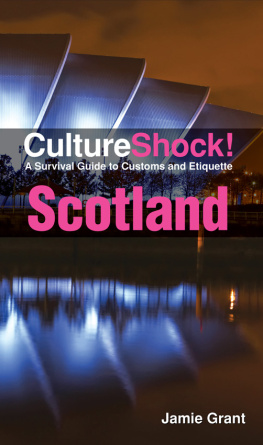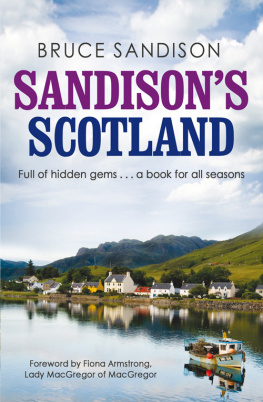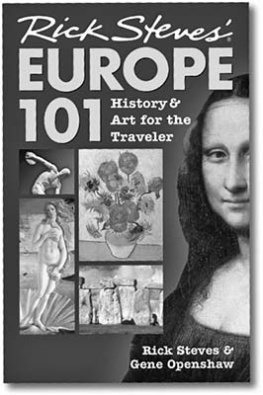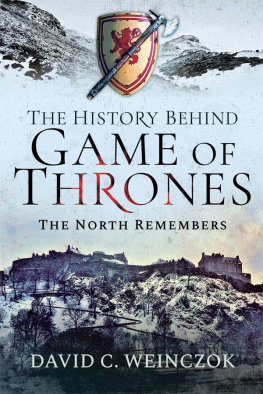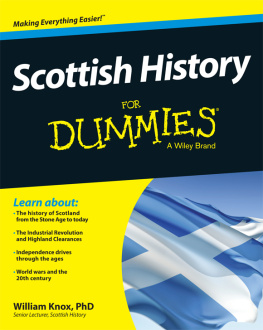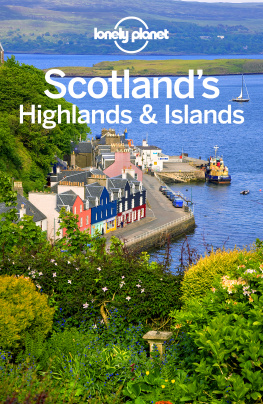B is for Bagpipes
A Scotland Alphabet
What country is made up of 95 islands, invented the game of golf, and raised a warrior worthy of the name Braveheart? Welcome to Scotland! In B is for Bagpipes: A Scotland Alphabet, Scottish native Eve Begley Kiehm gives an A-Z tour of the country that may be small in size but a giant in history and rich in tradition.
Kick up your heels at a Highland dance, visit the statue of Greyfriars Bobby as he stands guard near his masters grave, and dig into a dish of haggis with a side helping of tatties and neeps.
From the splendors of capital city Edinburgh to the stories of Robert Louis Stevenson to the gloomy waters of Loch Ness and its lonely Nessie, the treasures of Scotland are revealed. Artist Alexa Rutherford brings her native Scotland to life with colorful artwork that captures the proud spirit of its landscape and culture.
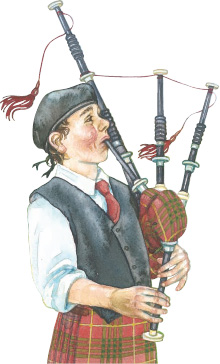
B is for Bagpipes
A Scotland Alphabet

Written by Eve Begley Kiehm and Illustrated by Alexa Rutherford

Dedicated with love to My children and stepchildren Juliet, Dermot, Randy, Darrell, Verity, Rhondda and my grandchildren Alida, Jenna, Kristen, Peyton, Kevin, Jack E. B. K.

For Elliot
My grandson living in the South of England, to help him become a Scot. Also for my family, Ross and Rowan, my mother, and especially John for all his help.
A.R.


A
In Scotland, the week between Christmas and the New Year used to be called the daft days and was always a time for parties and fun. Hogmanay, a Scots word for New Years Eve, finds Scots around the world linking crossed arms with family and friends and singing Auld Lang Syne. Set to a traditional melody, the words were written by poet Robert Burns, and the message is about old friendships and happy bygone days.
Every Scot who travels abroad carries with him or her a bit of the traditions of Scotland. So when the clock strikes twelve midnight on December 31st and everyone has sung Auld Lang Syne at least once, the custom of first-footing is often observed. This means that the first person crossing the doorstep after midnight is welcomed inespecially if the visitor is a dark-haired man carrying some food or drink and maybe a coin for luck. (Blonds are not so welcome because they are reminders of olden days when you might open your door to a Viking invader!) The first-footer is given a Neerday (New Years) drink and perhaps a piece of shortbread or spicy fruitcake encased in pastry, known as blackbun.
Should auld acquaintance be forgot,
And never brought to mind?
Should auld acquaintance be forgot,
And days of auld lang syne?
For auld lang syne, my dear,
For auld lang syne,
Well tak a cup o kindness yet,
For auld lang syne.
As for Auld Lang Syne (long, long ago).
With memories of good times, and memories of woe.

B
Bagpipes consist of an airbag (usually made of leather) and a number of pipes. To play, you blow into a pipe to fill the bag with air. Then you squeeze the bag under your arm, pushing the air out through the drone pipes (named for the droning or low humming sound they make), and the chanter, which has finger holes so you can play different notes. Bagpipes are not easy to play because you need to finger, blow hard, squeeze, and keep it all together at once.
In Scotland they cover the leather bag with a layer of tartan cloth. Scotland may not have invented the bagpipes, but if you see pipes with a tartan bag they are certainly Scottish. The Great Highland Bagpipe is most appreciated outdoors as it iswell, umLOUD. Much pipe music was composed centuries ago and passed down unwritten. A true Scot is moved by the sight of a hundred pipers playing in tune marching down a green hillside to the strains of Scotland the Brave.
B is for Bagpipes sweet and wheezy.
Playing them is never easy.
C
The Gaelic word clann means children. To the old Scottish chieftain, his clan was his family and he was the father who provided for them and protected their interests. In return, they pledged their loyalty and support when their chieftain needed it, in battle or otherwise.
Many of the clan names start with either Mc or Mac, both syllables meaning son of, so that the first Macdonald was the Son of Donald. The Vikings left us ancient names like MacLeod and McIver and the Normans and Flemish left names like Cameron and Fraser. The Highland clans were a proud bunch and there was a lot of in-fightingwe still use the adjective clannish to describe groups that stick to themselves. Clans were also common on the Scottish Borders where you will find Douglases, Maxwells, Johnstones, and others.
Some clans like to claim descent from Adam himself and theres a story about the MacLeods and the MacLeans arguing which clan was the older. The MacLeod said, Indeed, we never saw you on board Noahs Ark, to which the MacLean replied, The MacLean had a boat of his own.
C is for Clan and family names.
Youll see them all at Highland Games.

D
Traditional Scottish dancing has two distinctrhythmsthe reel, which is quick, and the Strathspey, which is slow and stately. These are group dances, usually with four, six, or eight people forming a set.
The most common dances in use today are the Dashing White Sergeant and the Eightsome Reeland they will leave you breathless! Youll hear some loud Hoochs all around as the party warms up. A room of tartan-clad lads and lassies, the floor reverberating with many feet, the skirl of pipes or the rhythm of a fiddle, and an accordion band warm the cockles of a Scots heart.
Young people still compete for honors in Highland Dancing with dances like the Highland Fling, the Sword Dance, and the Seann Triubhas (pronounced sheen trews and means old trousers). This dance was born when the law forbidding the wearing of the kilt was repealed. Now Scots could kick up their heels again and wear the kiltfreed from old trousers!
D is for Dances, the Sword and the Fling.
The swirl of the kilt is a marvelous thing!




